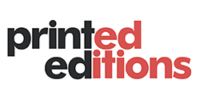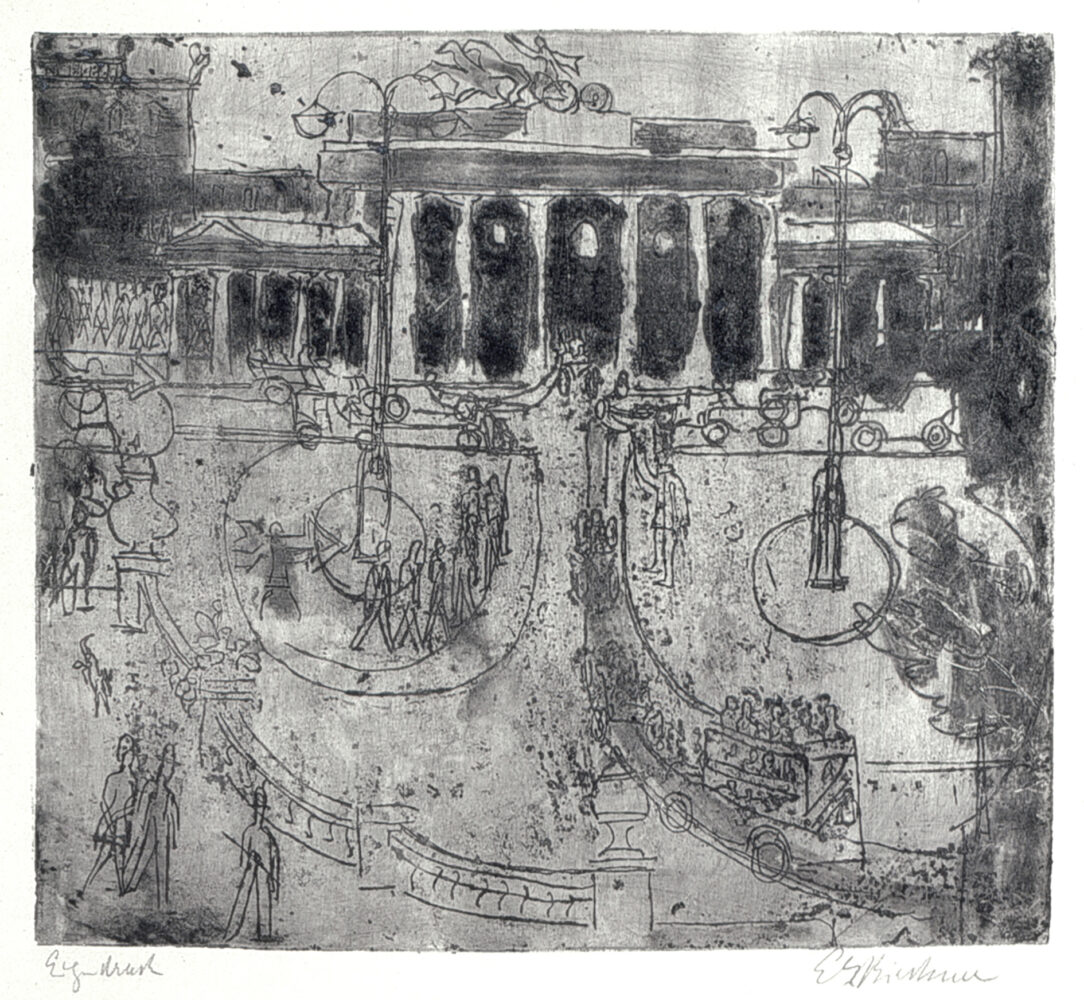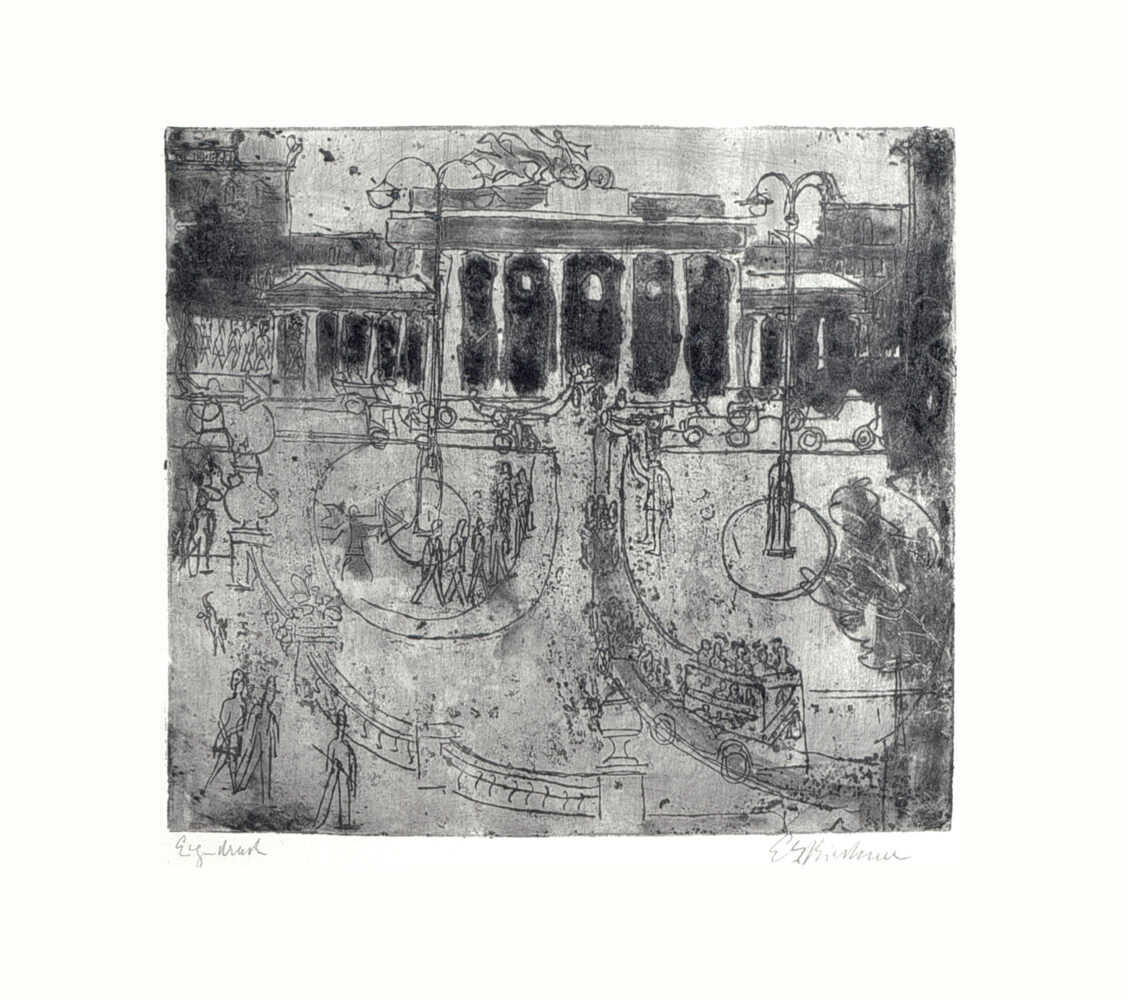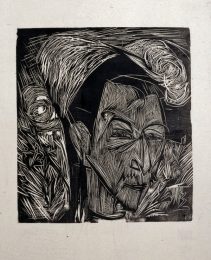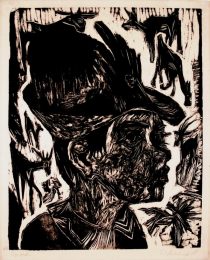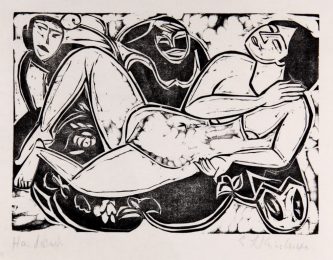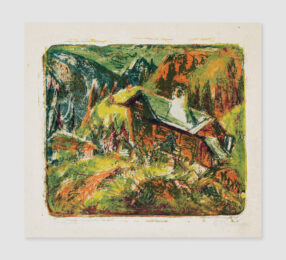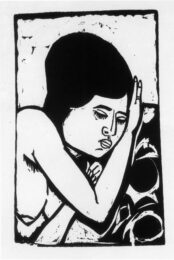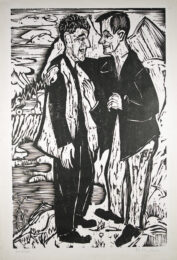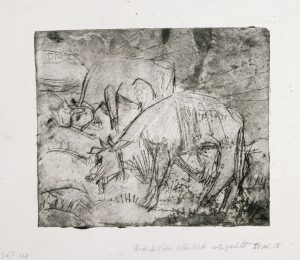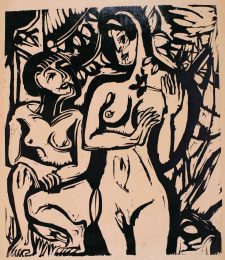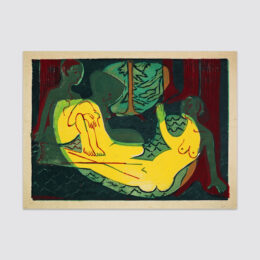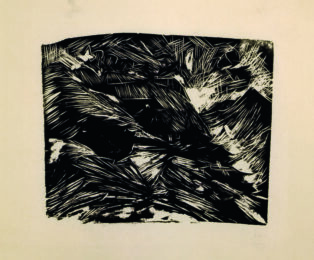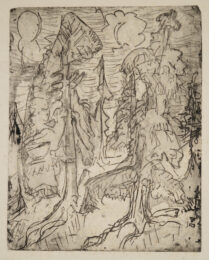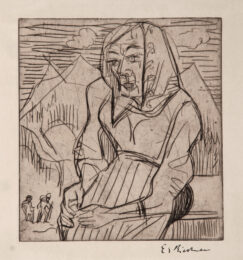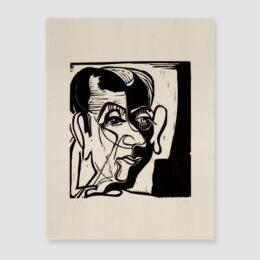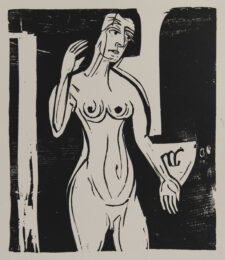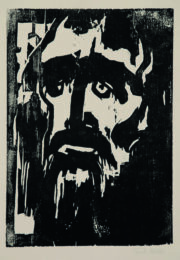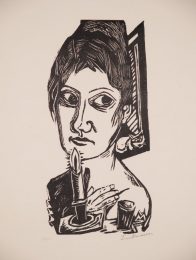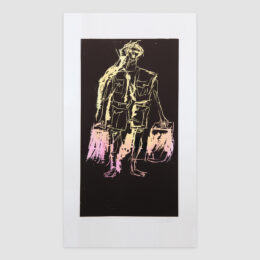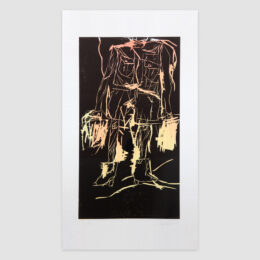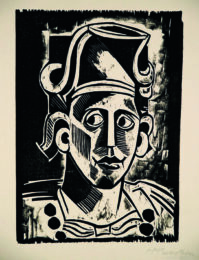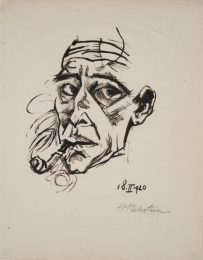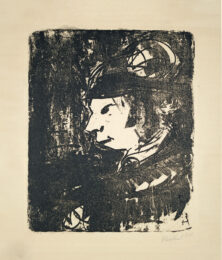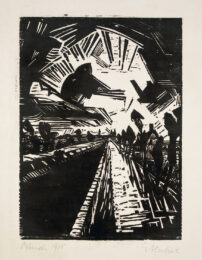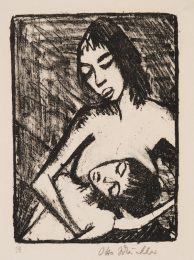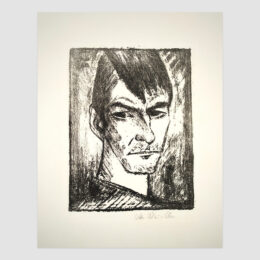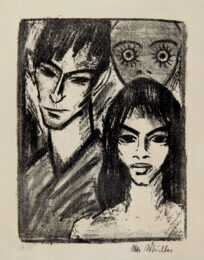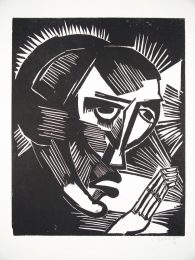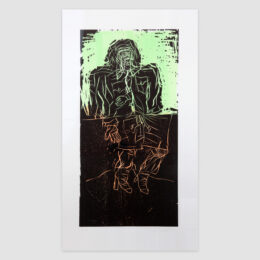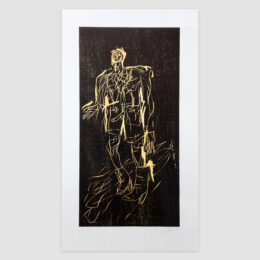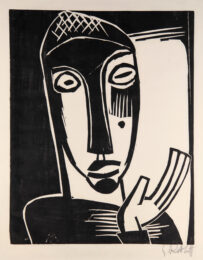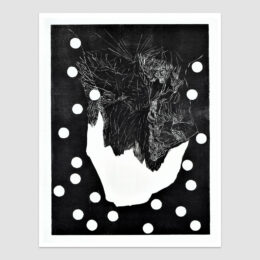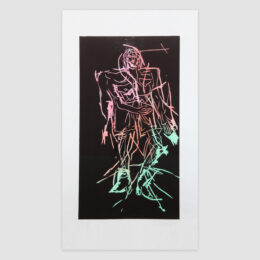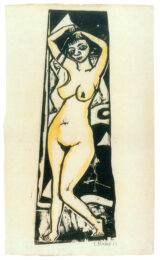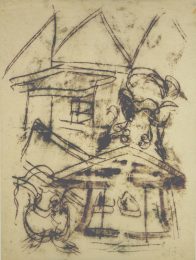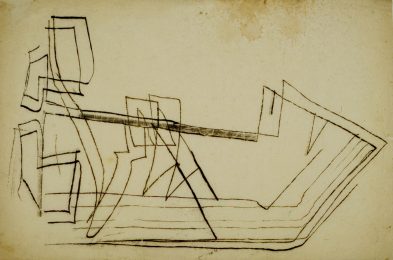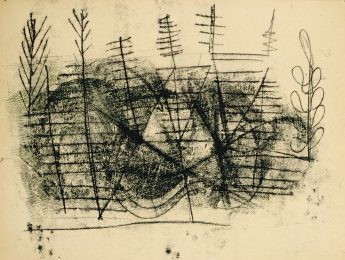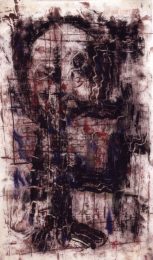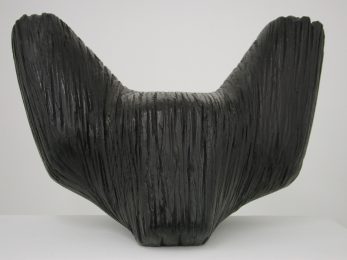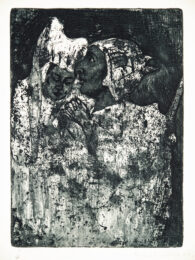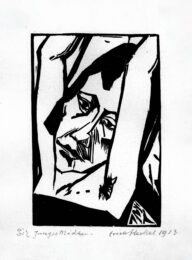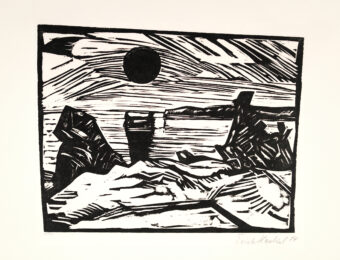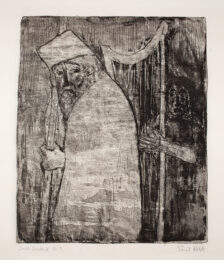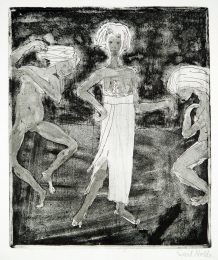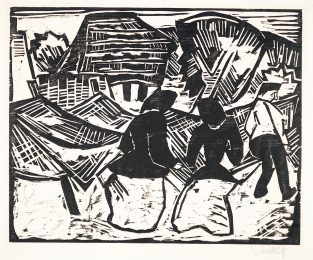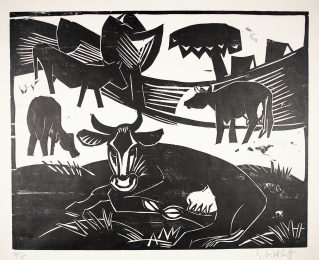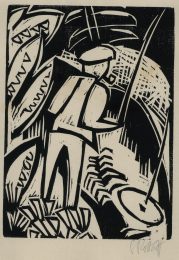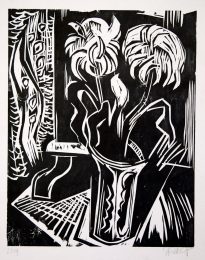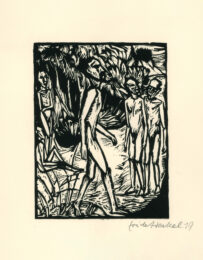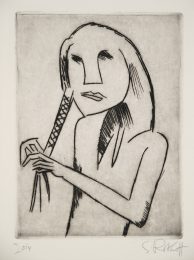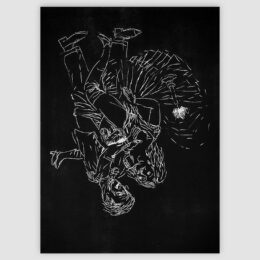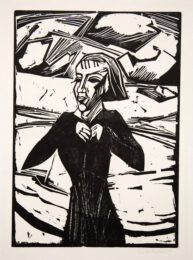Details — Click to read
On yellowish wove paper. One of 2 prints by the artist known to date. Signed ‘E L Kirchner’ lower right and inscribed ‘Eigendruck’ lower left. With the estate stamp and the inscription ‘R Da/Ab 1’ in ink on the verso.
Earlier catalogues raisonnés: No longer with Schiefler.
Further copies in the following collections: Staatliche Kunsthalle Karlsruhe, Inv. Ki 93.
At the end of 1925, Kirchner left Switzerland for the first time in nine years and travelled to Berlin via Frankfurt am Main (visit to his art dealer Schames and Carl Hagemann), Chemnitz (visit to his mother) and Dresden (visit to Will Grohmann). During the almost three-month journey, he was highly recognised throughout, but he hoped in vain that he would be offered a professorship in Germany.
Kirchner’s painting style became increasingly two-dimensional from 1925 onwards, and at the end of the 1920s he developed a very personal, always figurative but strongly abstract style. A planned commission for a large mural at the Museum Folkwang in Essen fertilised his late work, but failed due to human problems between the client (Ernst Gosebruch) and Kirchner. In the last years of his life, he created less abstract, but constructed figurative compositions that were strongly characterised by problems of light and shadow.
After the National Socialists seized power, he initially remained a member of the Prussian Academy of Arts, but was finally expelled in July 1937. In the same month, 639 works by Kirchner were removed from museums in Germany and confiscated, 32 of which were shown as part of the defamatory ‘Degenerate Art’ exhibition, including the Self-Portrait as a Soldier. Some of these works were later shown posthumously at documenta 1 (1955), documenta II (1959) and documenta III in Kassel in 1964.
